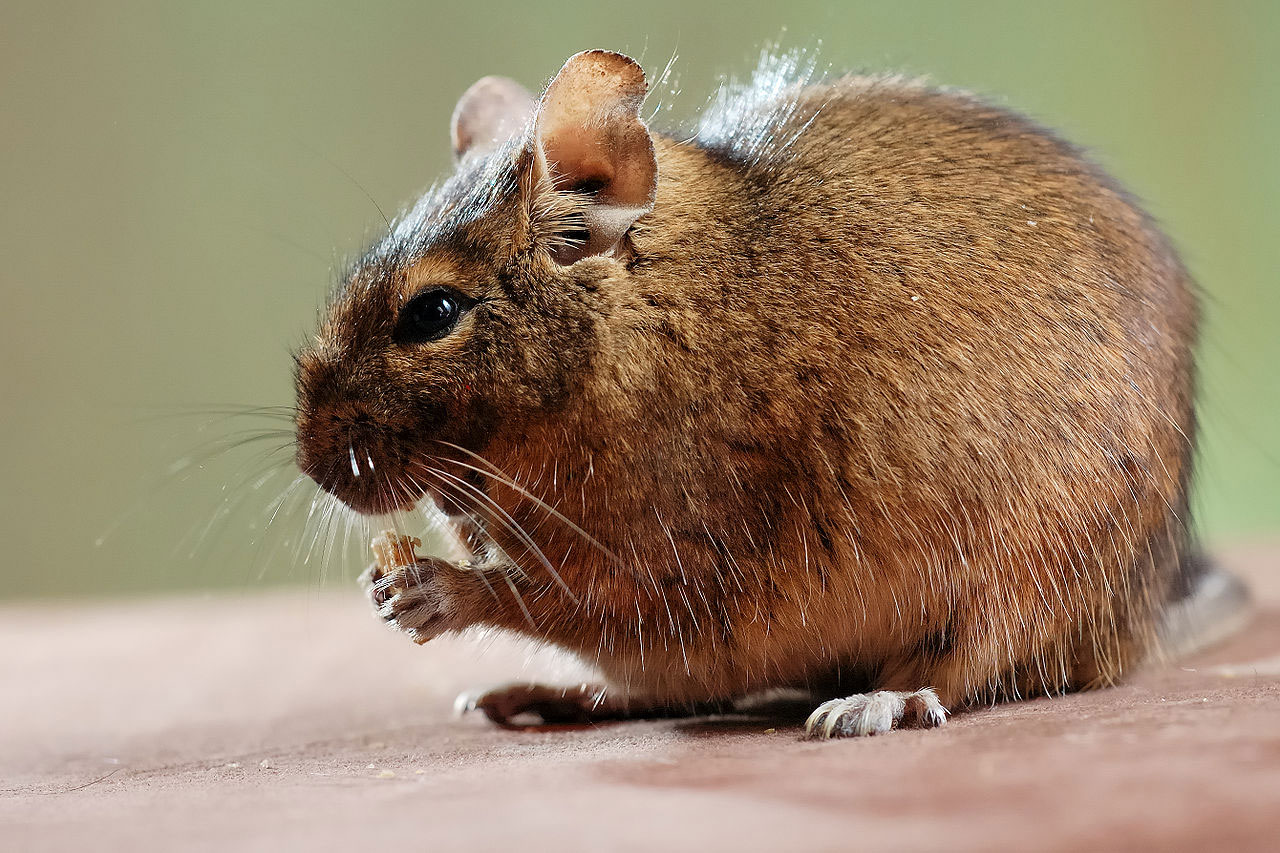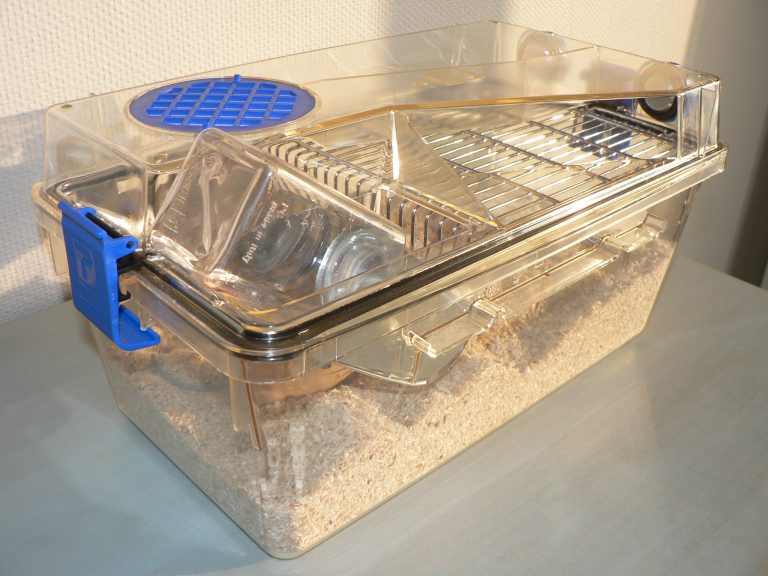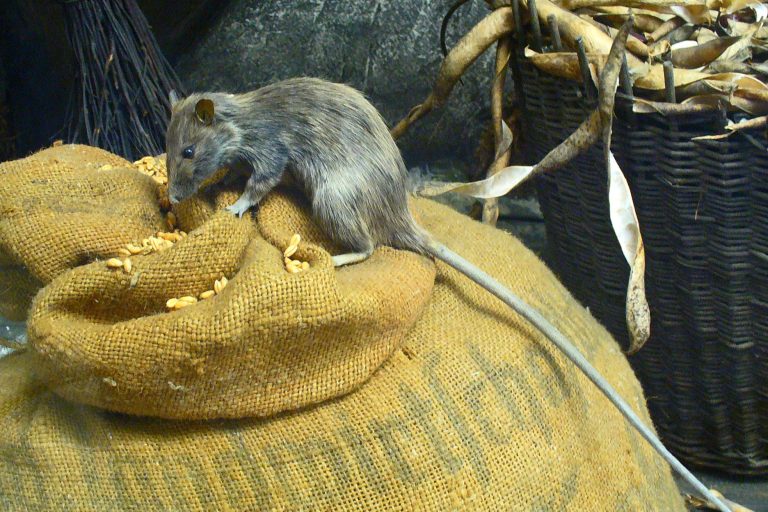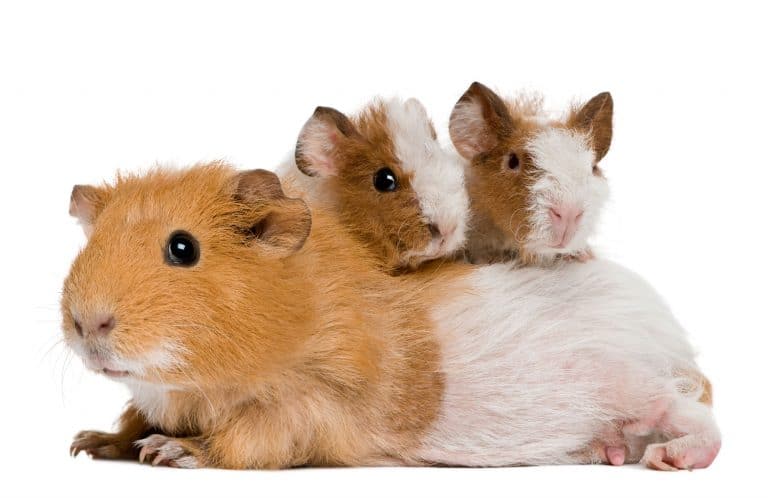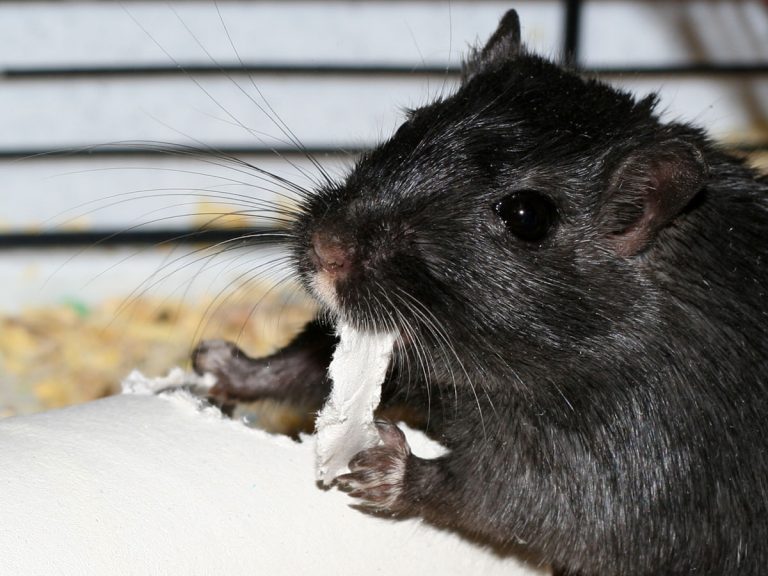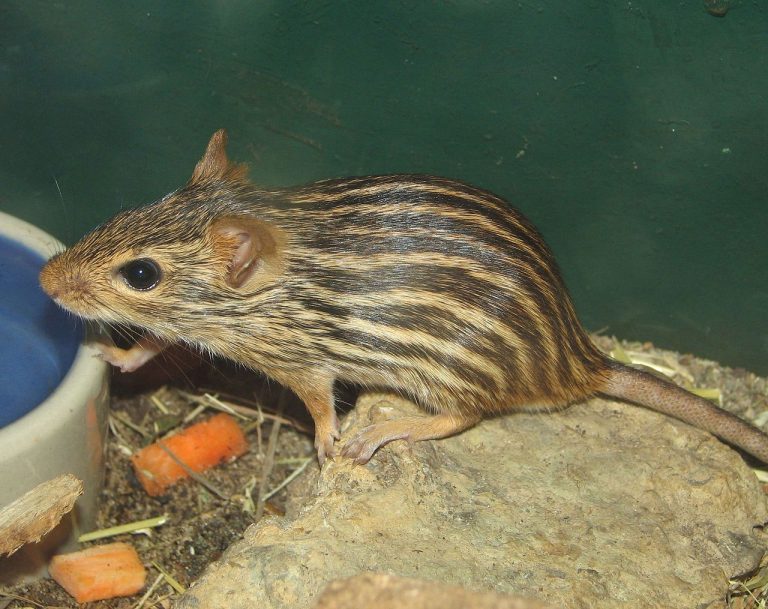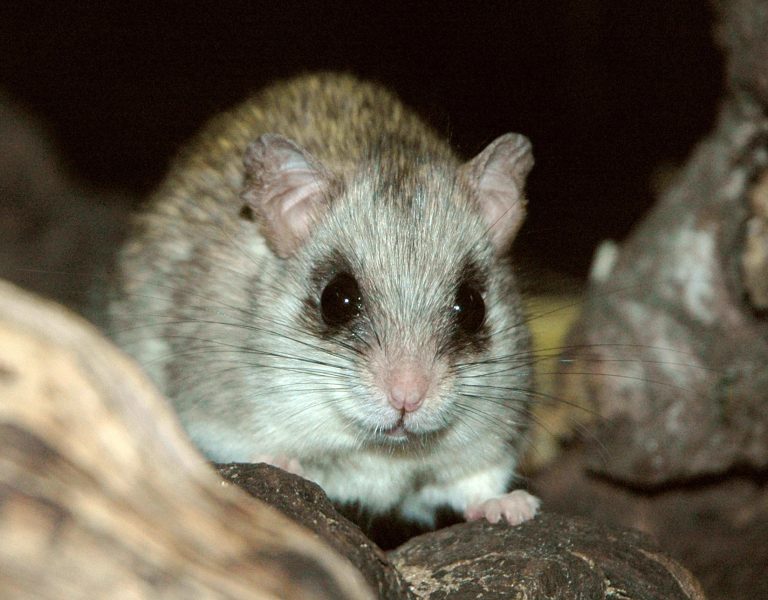Degu
Scientific Classification
| Kingdom: | Animalia |
| Phylum: | Chordata |
| Class: | Mammalia |
| Order: | Rodentia |
| Suborder: | Hystricognathi |
| Parvorder: | Caviomorpha |
| Family: | Octodontidae |
| Genus: | Octodon |
| Species: | O. degus |
| Binomial name: | Octodon degus |
People, at times, consider the Degu as a brush-tailed rat. Besides, they have named it the common Degu, to distinguish it from the associate members of the species of Octodon Degu, whose members also go by the name “Degu”, even though they have other names.
Anatomy
This small Degu has a body of length 25 to 31 cm (9.8 – 12.2”). It weights 170 to 300 GM (6.0 to 10.6 Oz). The Degu has yellow, brown fur on top and creamy-yellow underneath; around the eyes it is yellow and it has a lighter shade round the neck. Its tail is thin and long. The tip of the tail has a black tuft. Its toes are light gray and ears sparsely furred. The small fifth toe has a nail instead of a claw on the forefeet. It has bristled hind feet and teeth in the cheek has the shape of the figure 8, contributing to the Degu’s name, “Octodon”.
Behavior
Degus are to a great extent sociable and live in burrows. They join in the community and dig burrows, so that they are able to build more elaborate and larger burrows which is not possible if they work individually. They are inquisitive and playful. In the likely absence of facilities for exercise and social interaction, they become neurotic and aggressive. Degus are diurnal (active during the day. They live in communities in the wild just like prairie dogs) and dig complex burrows to live in.
Habitat
Octodon Degu belongs to West Central Chile; here it lives in the lower sloping areas of the Andes. Most people, however, do not support the idea that they have spread north words in Peru.
As a Pet
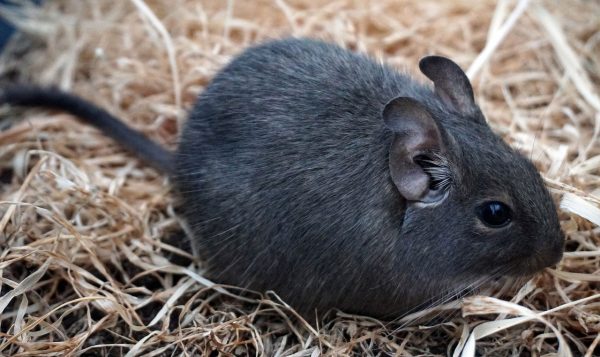
Breeding
Prior to breeding your Degus, make sure that they have no genetic relationship with each other. Further, ensure also that they are free from health problems such as cataracts, diabetes etc. In case any of the Degus have a cataract, it is likely that every offspring will have the same problem, as a result of which they become sickly and weak animals.
Housing
Degus prefer a big cage. At least 24 x 18 x 24” size of a cage is the minimum requirement of a couple of degus. Larger by all means is better. Also big multi-level cages like those of the chinchillas or ferrets are apt. Degus are ardent chewers, thus make your cage with wires, even though the floor of the cage must have a solid, not wired base. Make the ledges and shelves of solid surface because the degus are likely to develop foot illness.
Food
The fundamental of a good diet for a Degu is a combination of good quality guinea pig pellet or chinchilla and rodent blocks. Make available grass hay (such as Timothy hay) throughout (small hay racks are available for convenience). Besides, give them a little alfalfa hay, different types of fresh vegetables, particularly sweet potato (uncooked, peeled) leafy greens, carrots, green beans, broccoli and dandelion leaves.
Handling
Degus prefer living in groups; it is easier to tame them if you take care of them at an infant age. Do not grasp or attempt to lift a Degu by its tail; this results in disordered injury and loss of a piece of tail. Of course it is a natural protection of the wild degus to shed off their tail and. The tamed degus let you to lift them up by scooping them in cupped hands and placing one hand beneath each side of their body.

Having discovered a fondness for insects while pursuing her degree in Biology, Randi Jones was quite bugged to know that people usually dismissed these little creatures as “creepy-crawlies”.

